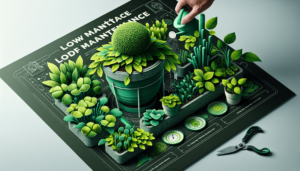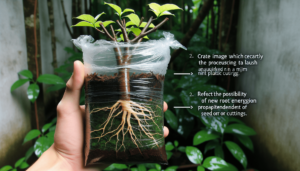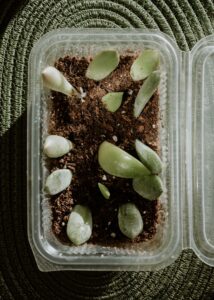In the gardening world, a versatile and fascinating plant propagation technique is known as layering. By harnessing the natural ability of plants to reproduce, layering allows us to create new and identical plants by simply encouraging the growth of roots on a stem or a branch. With various methods at our disposal, layering opens up a new world of possibilities for gardeners and plant enthusiasts alike. From air layering to simple layering, this propagation technique is a valuable tool in expanding our plant collections and nurturing the beauty of nature. Join us as we explore the art and science behind the remarkable layering technique.
Introduction to Layering
Definition of Layering
Layering is a versatile plant propagation technique that encourages the growth of new roots on a stem while it is still attached to the parent plant. This process allows plants to reproduce asexually, creating new plants genetically identical to the parent plant. Layering is popular among gardeners and horticulturists due to its simplicity and high success rate.
Benefits of Layering
Layering offers several advantages compared to other propagation methods. Firstly, layering allows gardeners to produce new plants without requiring specialized equipment or a greenhouse. This means that anyone with a garden or even a tiny balcony can successfully propagate plants through layering. Additionally, since layering maintains the genetic stability of the parent plant, gardeners can be confident that the offspring will exhibit the same desirable traits. Finally, layering is quick and easy, making it an efficient way to produce multiple offspring from a single-parent plant.
Types of Layering
Simple Layering
Simple layering is the most basic form of layering and involves bending a low-hanging stem to the ground and covering it with soil. The buried portion of the stem will develop roots, resulting in a new plant that can be separated from the parent plant once it has established a robust root system.
Tip Layering
Tip layering is similar to simple layering, but instead of bending a stem to the ground, the tip of a young and flexible stem is buried in the soil. The buried portion will develop roots and eventually grow into a new plant.
Air Layering
Air layering is used for plants with stiff or brittle stems that cannot be bent to the ground. In this technique, a stem section is partially removed from its bark and wrapped with moist sphagnum moss or a rooting medium. The area is then covered with plastic wrap to create a sealed environment that promotes root development. Once roots have formed, the newly rooted section can be removed from the parent plant and potted up.
Serpentine Layering
Serpentine layering involves creating multiple layers along a single stem by burying portions sequentially in a serpentine fashion. This technique allows gardeners to produce more offspring from a single stem, making it particularly useful for plants with limited branching.
Stool Layering
Stool layering is a method commonly used for woody plants such as willows. It involves cutting a plant to near ground level in late winter or early spring. New shoots will emerge from the base of the plant, which can be layered using one of the abovementioned techniques.
Steps for Successful Layering
Choosing the Right Plant
Choosing the right plant is an essential first step in successful layering. Look for long, flexible stems that can easily be bent or buried. Additionally, plants that naturally produce low-hanging stems or suckers are ideal candidates for layering.
Preparing the Parent Plant
Preparing the parent plant before starting the layering process is essential. Trim any excess foliage and remove any damaged or diseased stems. This will help redirect the plant’s energy towards root development in the layer.
Preparing the Layer
Preparing the layer involves selecting an appropriate section of the stem to layer. This section should have several healthy leaves and be wound or disease-free. If necessary, scrape off a small portion of the stem to promote root development.
Applying Rooting Hormones
To enhance root formation, consider applying a rooting hormone to the area where the stem will be buried. Rooting hormones contain plant growth regulators that stimulate root development.
Protecting the Layer
Once the layer is set and covered with soil or a rooting medium, it must be protected from extreme weather conditions, pests, and diseases. This can be achieved by using a layer of mulch or a makeshift barrier, such as a wire mesh cage or plastic wrap.
Maintaining the Layer
Watering
Proper watering is crucial for the success of a layered plant. Keep the layer consistently moist but not soggy. Regularly check the moisture level and adjust watering accordingly.
Fertilizing
To promote healthy growth, the layered plant needs nutrients. Follow the manufacturer’s instructions to apply a slow-release or liquid fertilizer diluted to half-strength.
Pruning
As the layered plant grows, it may benefit from occasional pruning to shape and train it. Pruning can also help stimulate the growth of lateral branches, leading to a fuller and more desirable plant.
Weed Control
Keep the area around the layered plant free from weeds to prevent competition for nutrients and water. Regularly remove any emerging weeds, carefully not to disturb the developing roots.
Timing for Layering
Seasonal Considerations
The timing of layering varies depending on the plant species and the desired outcome. In general, spring and early summer are the most favorable seasons for layering, as plants are actively growing and root development occurs more readily.
Optimal Time for Layering Different Plants
Different plant species have different optimal times for layering. For example, azaleas are best layered in early to mid-summer, while raspberries are typically layered in the late spring or early summer. It is essential to research the specific requirements of each plant species to ensure successful layering.
Troubleshooting Layering
Failure to Root
Even with careful preparation and maintenance, sometimes layering fails to produce roots. This can be due to improper stem selection, inadequate moisture, or unfavorable environmental conditions. Some plants are naturally more challenging to layer, so it is essential to be patient and persistent. If layering fails, consider trying again or explore alternative propagation methods.
Disease and Pest Control
Disease and pest infestations can hinder the success of layering. Regularly inspect the layered plants for any signs of disease or pests, such as wilting, discoloration, or the presence of insects. Treat any issues promptly with appropriate remedies, such as fungicides or insecticides, to prevent further damage to the layer and the parent plant.
Advantages of Layering
Genetic Stability
One significant advantage of layering is its genetic stability. When plants are propagated through layering, the offspring are genetically identical to the parent plant, inheriting all desirable traits. This ensures consistency in flower color, fruit size, or growth habit.
Quick and Easy Process
Layering is a relatively quick and more effortless propagation method than other techniques, such as seed sowing or grafting. With just a few simple steps, gardeners can create new plants ready for separation once a robust root system has developed. Layering also requires minimal equipment and can be done with readily available materials.
Disadvantages of Layering
Limited Number of Offspring
While layering offers a straightforward way to produce new plants, it has limitations regarding the number of offspring that can be obtained. Each layered stem will only produce a single offspring, limiting the potential for mass propagation. This can be a drawback for gardeners looking to make many plants.
Possibility of Strain on Parent Plant
Layering involves temporarily burying or bending a portion of the parent plant’s stem, which can strain the plant. Stress or damage from layering can affect the overall health and growth of the parent plant, especially if multiple layers are created. Gardeners should be mindful of this and gauge the condition of the parent plant before attempting layering.
Examples of Plants Suitable for Layering
Azaleas
Azaleas are well-suited for layering due to their low-hanging branches and the ease with which they produce roots. The best time to layer azaleas is in early to mid-summer when the stems are supple and actively growing. With proper care, layered azaleas will develop into new plants that can be transplanted and enjoyed in the garden.
Raspberries
Raspberries are another plant that responds well to layering. Select a healthy and flexible stem in late spring or early summer, bury it in the soil, and provide regular care and maintenance. The layered stem will soon develop roots, and within a year, it can be separated from the parent plant to create a new raspberry bush.
Wisteria
Wisteria is a beautiful flowering vine that can be easily propagated through layering. Select a long and pliable stem and bury a section of it in the soil while keeping the rest of the stem attached to the parent plant. Given the right conditions, the layered stem will develop roots, and gardeners can then sever it from the parent plant to create a new wisteria plant.
Forsythia
With its vibrant yellow flowers, forsythia is a popular plant for layering. In early summer, choose a healthy and flexible stem and gently bend it to the ground, burying a portion in the soil. The buried section will develop roots with diligent care and maintenance, and a new forsythia plant can be established.
Conclusion
Layering is a versatile and effective plant propagation technique that offers numerous benefits to both experienced gardeners and beginners alike. With its simplicity and high success rate, layering allows for the quick and easy production of genetically identical plants. By following a few simple steps and considering the specific requirements of each plant species, gardeners can successfully layer various plants, from azaleas and raspberries to wisteria and forsythia. So, why not try layering and enjoy the satisfaction of creating new plants from your existing garden? Happy layering!



